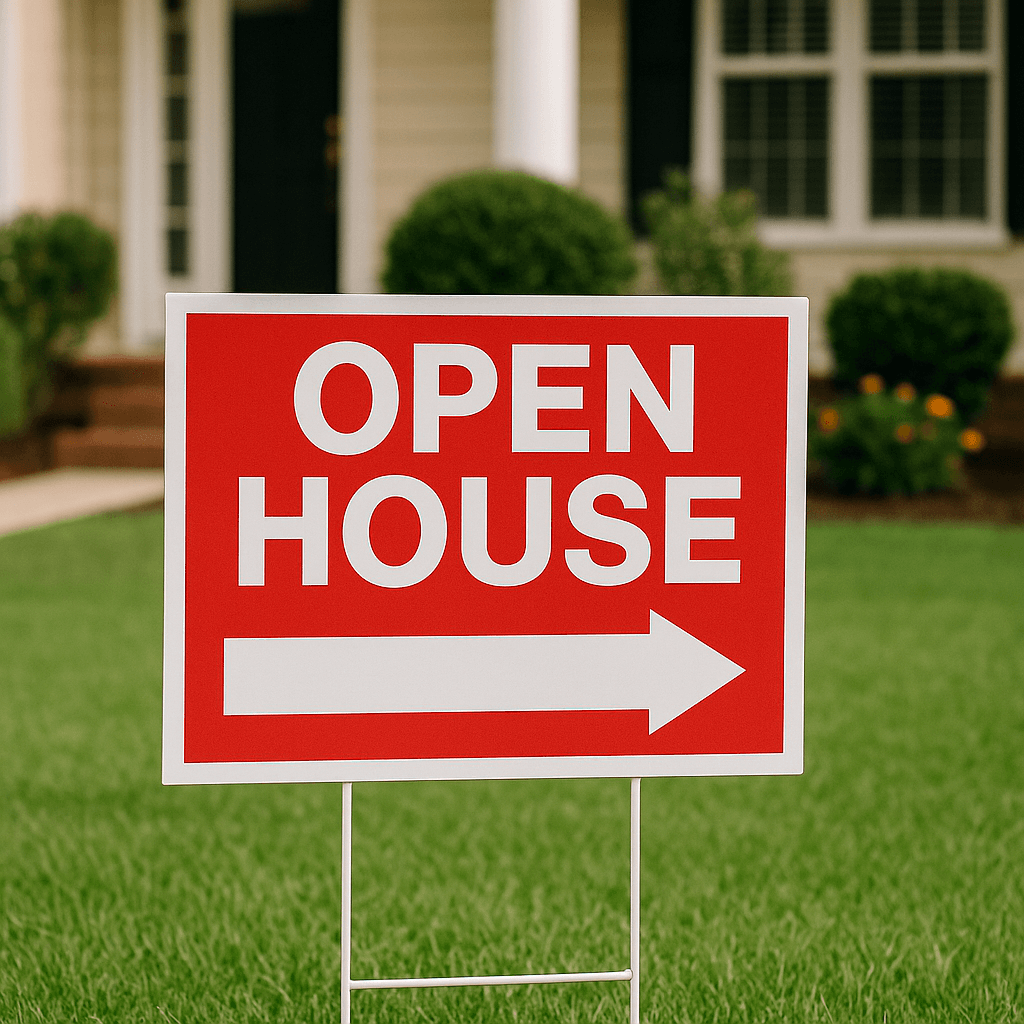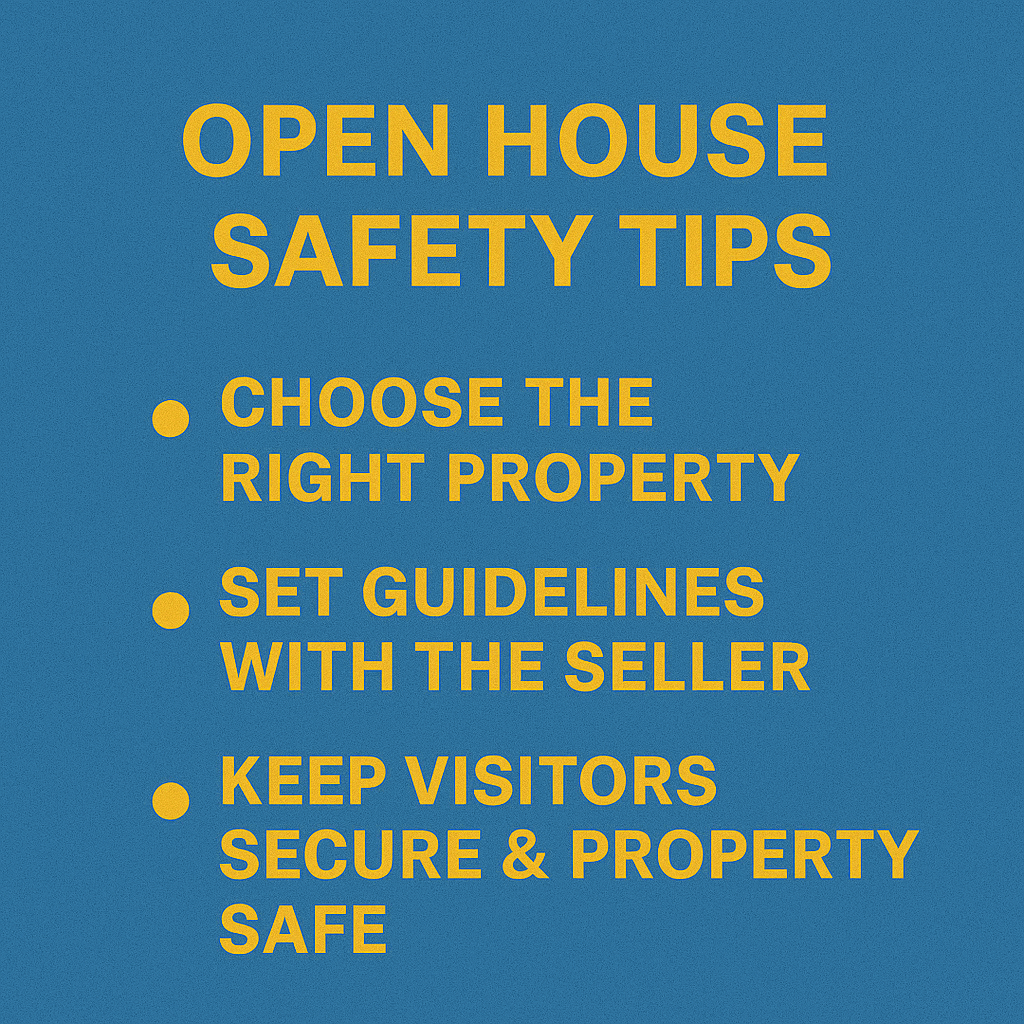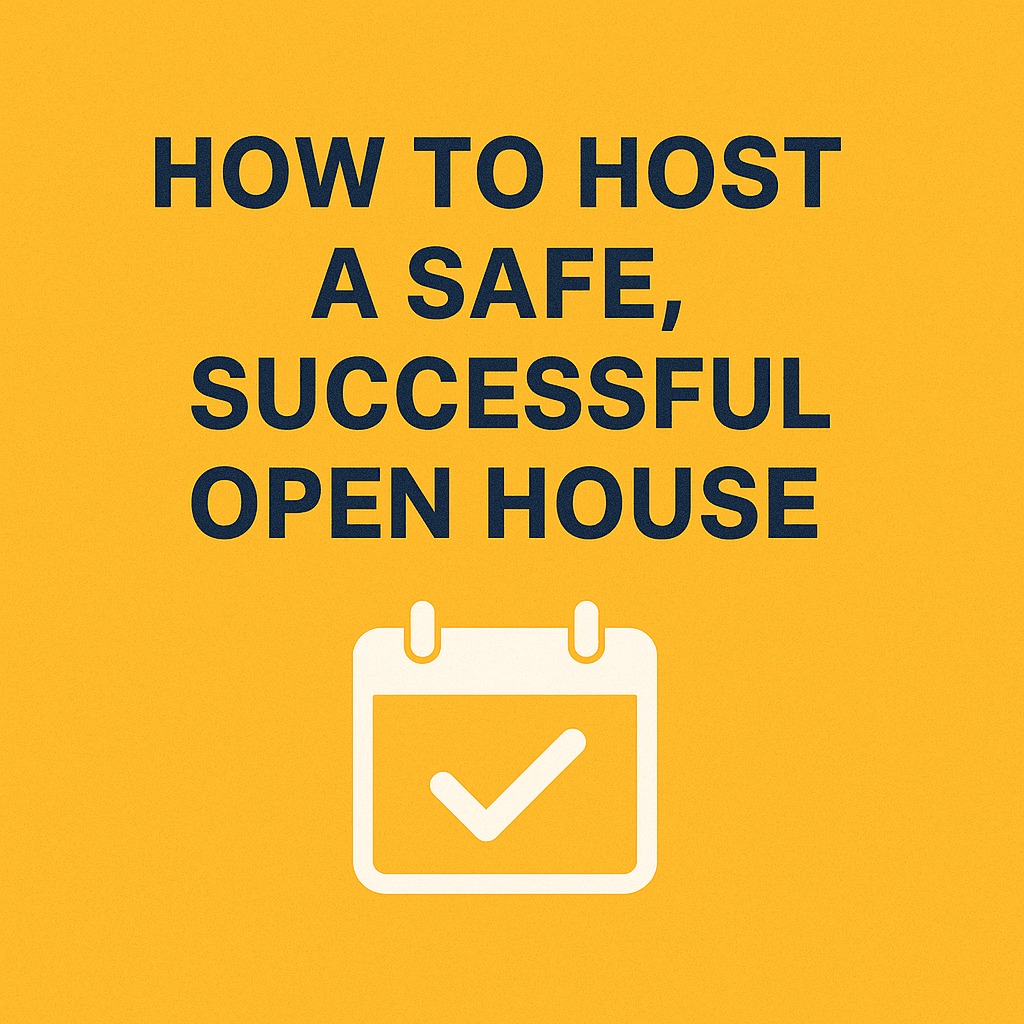Conducting Open Houses & Creating a Safety Plan
Open houses have long been a staple of real estate marketing, but not all open houses are created equal. A successful event starts with choosing the right property, preparing the seller, and keeping everyone—visitors, sellers, and agents—safe. This guide walks you through the process of planning and hosting a professional open house while protecting property, privacy, and personal safety.

Conducting Effective Open Houses
Types of Open Houses
There are several ways to host an open house, each with a unique purpose:
Office Open House – Held before the listing goes public, giving agents in your office first access and a chance to provide valuable pricing or staging feedback.
Broker’s Open House – Invites local agents and brokers to preview the home and network, often with food or giveaways to boost attendance.
Public Open House – Targets prospective buyers and neighbors. Best done once every few weeks to avoid appearing desperate.
Neighbor Open House – A lesser-known strategy that gives neighbors the first look and helps generate word-of-mouth marketing.
Why Public Open Houses Still Matter
While they may seem inconvenient, public open houses provide critical networking opportunities. They attract early-stage buyers, allow neighbors to act as informal ambassadors, and give your brokerage extra visibility in the neighborhood.
Choosing the Right Property
Not every listing is a good open house candidate. Virtual tours may be better for properties in remote areas, homes that are poorly staged, or those with security risks. Reserve open houses for properties that deliver a strong emotional impact when seen in person.
Setting Guidelines with Sellers
Coordinate with the seller on timing and expectations. Open houses typically run for two hours on weekend afternoons. Discuss the sign-in process, visitor identification, and what is expected of the seller before and after the event.
Preparing the Property
Encourage sellers to:
Declutter, Clean, & Repair – Remove excess items, fix broken features, and deep clean.
Depersonalize – Pack away personal photos and valuables.
Stage & Accessorize – Add fresh linens, tasteful décor, and ensure good lighting.
Maximize Curb Appeal – Mow the lawn, clean windows, and make the entry inviting.
Sellers should also leave during the event, taking pets with them to create a comfortable experience for buyers.
Protecting Confidential Information
Keep conversations professional. Never disclose the seller’s motivations, deadlines, or lowest acceptable price. Focus on the property’s features rather than personal details.
Security Measures
Before the event, clear walkways, secure valuables, and prepare multiple exit routes. During the open house, guide traffic flow, supervise high-value rooms, and ensure children are monitored. Afterward, lock all doors and windows, extinguish candles, and confirm with the seller when it’s safe to return.

Developing a Real Estate Safety Plan
Personal Safety Best Practices
Because agents frequently meet strangers in vacant homes or remote areas, safety is critical.
Meet new prospects in a public place or office before showings.
Collect ID, vehicle details, and keep a copy of the client’s information.
Always inform a colleague where you are and have regular check-ins.
Carry a charged phone and keep keys accessible.
Plan multiple escape routes and ensure doors are unlocked during the event.
Showing Vacant Properties
Inspect the exterior first, look for signs of unauthorized occupants, and bring a partner when possible. If anything seems suspicious, leave and contact law enforcement.
Buddy System & Intuition
Work in pairs when possible, especially with new clients. Trust your instincts—if something feels wrong, end the meeting and leave immediately.
Marketing & Privacy
Keep marketing materials professional and avoid sharing personal information or family photos. Use a business-specific phone number to maintain privacy.
Road Safety
Keep your vehicle well-maintained, carry a roadside kit, and avoid texting while driving. Program an ICE (In Case of Emergency) contact into your phone.
How to Host a Successful and Safe Open House
Open houses are one of the most powerful tools in a real estate agent’s marketing strategy. But hosting a successful open house means more than just unlocking the door—it requires planning, staging, and a strong focus on security. In this guide, we’ll show you how to prepare your listings, protect your clients, and keep yourself safe while creating the perfect environment for buyers.
Step 1: Pick the Right Property
Not every home needs an open house. Choose properties that offer a unique experience or benefit from in-person viewing. For homes in remote areas or those with privacy concerns, consider virtual tours instead.
Step 2: Prepare Your Seller and the Home
Educate sellers on what to expect, from sign-in sheets to leaving the house during the event. Help them declutter, depersonalize, and stage the home so buyers can easily imagine themselves living there.
Step 3: Market Your Open House
Advertise through MLS, social media, email campaigns, and neighborhood invites. A well-timed, well-promoted open house can create a buzz that drives traffic.
Step 4: Prioritize Safety and Security
Your seller’s home is your responsibility during the event. Secure valuables, check that walkways are clear, and keep visitor traffic organized. Afterward, lock up and notify the seller that the home is secure.
Step 5: Protect Your Personal Safety
Always meet new clients in a public space first, share your schedule with a colleague, and trust your intuition. Carry a charged phone, plan exit routes, and never ignore red flags.
Final Thoughts
An open house can be an incredible lead generator and a way to build trust with your sellers. By following a clear open house safety plan, you’ll not only protect yourself and your clients but also create a professional, welcoming environment that encourages offers.

